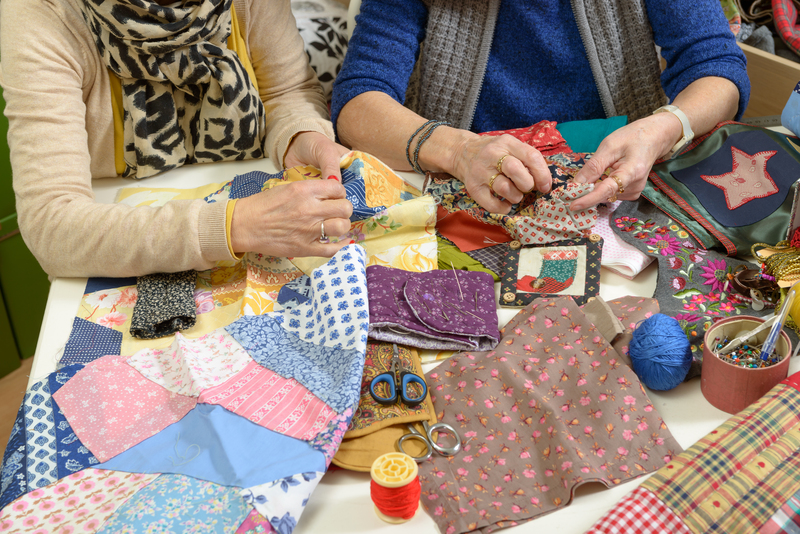Environmentally Friendly Ways to Get Rid of Used PPE
The use of personal protective equipment (PPE) has soared in recent years due to global health crises, industrial needs, and public safety concerns. While these protective items are invaluable for safeguarding human health, their increasing usage poses a new environmental challenge. Improper disposal leads to pollution, threatens wildlife, and contributes to overflowing landfills. Understanding environmentally friendly methods to get rid of used PPE is now more important than ever.
Understanding the Environmental Impact of PPE Waste
Personal protective equipment typically comprises face masks, gloves, gowns, goggles, and face shields, often manufactured from non-biodegradable plastics such as polypropylene and polyethylene. When mishandled, used PPE can:
- Persist in landfills for hundreds of years
- Break down into microplastics, contaminating water and soil
- Pose a physical threat to marine and terrestrial wildlife
- Release toxic substances during incineration without adequate filtration

1. Segregate Contaminated and Non-Contaminated PPE
A foundational step in disposing of PPE sustainably is distinguishing between contaminated and non-contaminated items.
- Contaminated PPE: Includes materials exposed to biological hazards or chemicals. These often require specialized disposal to prevent health risks.
- Non-contaminated PPE: Includes masks, gloves, and face shields used in non-medical settings or not exposed to hazardous environments. These are usually suitable for environmentally friendly disposal options.
Proper segregation allows for safer and more efficient recycling or treatment, minimizing the environmental footprint.
2. Embrace PPE Recycling Initiatives
Many components of personal protective equipment are recyclable, but standard recycling facilities don't always accept them due to contamination fears. Specialized recycling programs have emerged to address this.
Specialized PPE Recycling Programs
- Terracycle PPE Zero Waste Box: An international innovator in hard-to-recycle materials, Terracycle offers boxes specifically for masks, gloves, and goggles. Users collect their PPE and ship it to Terracycle, where the products are cleaned, sorted, and transformed into new plastic goods.
- Hospital and Industrial PPE Take-Back Schemes: Some manufacturers and suppliers partner with healthcare and industrial organizations to collect used PPE, particularly clean masks and gowns, for industrial recycling.
Always check with your local recycling facility or environmental agency for updates on available PPE recycling options before discarding used equipment.
3. Upcycling: Giving PPE a New Life
Upcycling used PPE is a creative and eco-conscious way to reduce waste and support sustainable PPE disposal. Upcycling re-purposes old products into useful or artistic items.
Upcycling Ideas for Used PPE
- Plastic face shields: Clean, sanitize, and reuse as painting shields or protective covers for DIY projects.
- Elastic bands from masks: Useful in crafts, garden ties, or bundling cables.
- Plastic goggles: After proper disinfection, reimagine as fun costume accessories or safety gear for light home projects.
*Note: Upcycle only non-contaminated and properly sanitized PPE to ensure safety.*
4. Reducing PPE Waste at the Source
The most environmentally friendly way to discard PPE is to produce less of it in the first place. This approach is called waste minimization.
- Switch to Reusable PPE: Choose washable, reusable face masks, gowns, and gloves where appropriate. These can be sanitized easily and used many times before disposal.
- Educate and Train: Organizations should train staff on efficient PPE usage to minimize unnecessary consumption.
- Implement Safe PPE Decontamination: In specific settings, PPE can be safely sanitized and reused, significantly reducing total waste.
5. Composting Biodegradable PPE
Some PPE is now available in biodegradable versions, made from materials like cornstarch or bamboo. These break down naturally and can be composted if uncontaminated.
- Check Material Labels: Only compost PPE clearly marked as "biodegradable" or "compostable."
- Use Industrial Composting Facilities: Many biodegradable plastics require higher temperatures and specialized conditions to break down fully.
- Avoid Home Composting Contaminated PPE: Always discard contaminated gear by more secure means to prevent disease spread.
6. Proper Disposal of Contaminated PPE
For items exposed to infectious agents (as in healthcare or quarantine settings), safe and eco-friendly disposal of PPE must protect public health first.
Best Practices for Contaminated PPE
- Double-bagging: Place used PPE in a secure bag, seal it, then place it in a secondary bag. Clearly label the waste.
- Follow Local Guidelines: Local governments often provide updated recommendations for disposing of contaminated materials safely and responsibly.
- Incineration: When required, use modern high-temperature incinerators with adequate filtration to minimize emissions. Never burn PPE at home or in open fires.
While traditional incineration isn't strictly eco-friendly, modern facilities designed for infectious waste do limit environmental damage compared to unsafe alternatives.
7. Organizing Community PPE Collection Points
Many communities are setting up dedicated drop-off centers for used PPE disposal. This encourages responsible handling and allows for centralized sorting and recycling.
- Local Pharmacies and Health Clinics: Many now offer used PPE collection bins.
- Workplace or School Collection: Encourage institutions to provide separate disposal bins and partner with recyclers or hazardous waste handlers.
This approach increases public awareness, keeps PPE waste out of regular trash, and supports community-driven environmentally sustainable PPE disposal.
8. Supporting Research and Innovative Disposal Technologies
Modern science is innovating new ways to break down or repurpose used PPE responsibly. By supporting such initiatives financial or by participation, you contribute to long-term sustainability.
- Enzyme-Based Decomposition: Researchers are developing enzymes that can degrade synthetic PPE plastics into harmless substances.
- PPE-to-Energy Plants: Some pilot projects convert used PPE into electricity or heat through advanced waste-to-energy technology with emission controls.
- Corporate Responsibility: Demand that manufacturers design PPE with recyclability or biodegradability in mind and support take-back programs.
9. DIY Eco-Conscious PPE Disposal at Home
If official recycling or take-back programs are unavailable, there are steps you can personally take to reduce your environmental impact when you dispose of PPE:
- Reduce Touch Points: Wash your hands before and after handling used PPE.
- Cut Straps of Masks: This protects wildlife that could become entangled if the waste escapes into nature.
- Place in Designated Litter: Bag securely before placing in trash to prevent scattering during transport and disposal.
Although not as effective as specialized recycling, these measures help mitigate certain environmental risks.
10. Advocating for Policy Changes and Public Awareness
Lasting change comes when individuals and communities advocate for eco-friendly PPE waste policies at local and national levels.
- Encourage Governments to Expand Recycling Infrastructure: Advocate for investment in dedicated facilities and public take-back programs for PPE.
- Education Campaigns: Raise awareness about the long-term consequences of PPE pollution and the options available for sustainable disposal.
- Support Legislation: Favor regulations that require manufacturers to improve PPE design for recyclability or require minimal packaging.
What Not to Do: Unsafe PPE Disposal Methods
- Do not flush PPE down toilets or sinks: It can clog sewer systems and pollute waterways.
- Do not dispose of PPE as garden compost unless certified biodegradable and uncontaminated.
- Never burn PPE in open fires: This releases harmful chemicals into the air and pollutes the environment.
- Never leave PPE as litter: Discarded masks and gloves in public spaces contribute to urban blight and hazard wildlife.

The Benefits of Eco-Friendly PPE Disposal
Adopting environmentally friendly PPE disposal methods yields considerable benefits:
- Reduces pollution: Prevents plastics and chemicals from entering natural ecosystems.
- Promotes public health: Minimizes accidental disease spread and blocks vectors of infection.
- Supports the circular economy: Recycled PPE can become raw material for new products, reducing demand for virgin resources.
- Inspires innovation: Fosters new solutions for PPE production and waste handling.
Conclusion: Every Action Counts in Sustainable PPE Disposal
The rise in PPE usage need not translate to environmental decline. From adopting PPE recycling programs, upcycling ideas, and embracing biodegradable options, to advocating for better policies and supporting innovative disposal technologies, there are numerous ways to dispose of used PPE responsibly.
Each person and organization can make a difference by making informed choices and increasing awareness around the importance of sustainable PPE waste management. By following the environmentally friendly ways to get rid of used PPE outlined above, we can all contribute to a cleaner, safer, and more sustainable planet.
Frequently Asked Questions (FAQ): Environmentally Friendly PPE Disposal
- Can masks and gloves be recycled at home?
Most local curbside programs do not accept PPE, but special recycling schemes may exist. Always check your local guidelines. - How can I find out if PPE is biodegradable?
Review packaging for labels like "biodegradable" or "compostable," or consult the manufacturer. - What should I do with contaminated PPE?
Always secure in a bag and follow local hazardous waste disposal advice. Never place with regular recyclables.
Have questions or want to share your eco-friendly PPE disposal tips? Leave a comment below and join the conversation for a cleaner, greener future!
